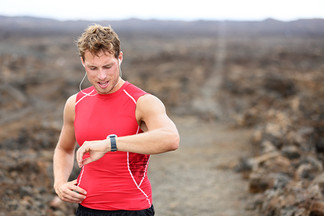Posted by A.J. Nygren on 23rd Oct 2017
Triathlon Training
A Guide to Triathlon Training
Triathlon is a complex sport. Three stages, two transitions, hundreds of muscles used and calories burned. How does one train for an event with so many intricacies? It is easier than it sounds but is not without hard work. There are a handful of distances of triathlon events that will dictate your training. The shortest of the distances where speed and efficiency are key for those who want to win is called the “sprint” triathlon. These events are also very beginner friendly because of the very approachable distances for all three disciplines. The swim, bike, and run portions of a sprint are 0.5mi, 12.4mi, and 3.1mi respectively. A new triathlete could train for a sprint triathlon in a matter of six or eight weeks by practicing each event by itself for a few sessions and then integrating what are called “brick workouts.” These training sessions involve going from the swim to run (and practicing transition technique) or going from bike to run (also practicing transition technique.) After doing a few brick workouts, you will adapt to the stresses of going seamlessly from one event to the next without losing rhythm for raceday.
Training changes when you approach the longer course triathlons. These courses are usually referred to as: “Olympic” or Half/Full Ironman distances. The Olympic is roughly double the length of a sprint triathlon with the swim, bike, and run portions being .93mi, 24.8mi, and 6.1mi respectively. The Half Ironman (sometimes called the 70.3 due to the total course length in miles) is a 1.2mi swim, 56mi bike, and a 13.1mi (half-marathon) run. The full Ironman is a huge event totaling 140.6mi with all events doubling those in the 70.3 event. Some finishers of the Ironman are in motion for over fifteen hours! (Fun fact: there is one ultra-triathlon called the “Uberman” in which the very few athletes who attempt this are going to swim 21 miles [think: across the English Channel] and then bike for 400 miles only to have to complete a 135 mile run on the same course as the brutal Badwater 135 ultramarathon. The total distance of the Uberman is a truly frightening 556 miles.) The training for these longer events is different because of the need for nutrition and an ability to be on a bike for the better part of what can be seven/eight hours and then run for four or five. The physical training will involve a greater time commitment of a number of months for the Ironman length events and longer sessions in each of the disciplines as well as much more intense brick workouts. You will also have to learn (often through trial and error) how to fuel your body at the right times as your natural glycogen stores are only good for about an hour and a half of consistent exercise. This means that you will probably have to have a bit of food (Energy gel, Clif Blocks, or otherwise) by the time you are done swimming in the Ironman event.
If you don’t supply yourself with enough calories, you will run out of glycogen and your body will have to start using stored fat as an energy source which is used more slowly and you may experience the “bonk” or “hit the wall.” This has stopped even the very best athletes from completing the event so be sure to experiment with fueling during your long rides and runs. Most endurance athletes consume 200 Calories per hour with larger or more muscular people using a bit more. There is more to race nutrition than calories, though. The other side is electrolytes like sodium, potassium and magnesium. When you sweat, you lose water and electrolytes and if you don’t replace them you can develop a very dangerous condition called hyponatremia which is when the sodium levels in the blood get too low and too much water is retained. This can cause extreme fatigue, muscle weakness, and vomiting. Not something you want to deal with at mile eighty…fear not though! Products like Gu Roctane or Saltstick are easy to bring with you on the bike and run and will replenish what you lose. Triathlon training might sound intimidating but as long as you have the desire to be consistent, push yourself, and fuel your body well you will succeed no matter if it is your first sprint or your latest Ironman!

